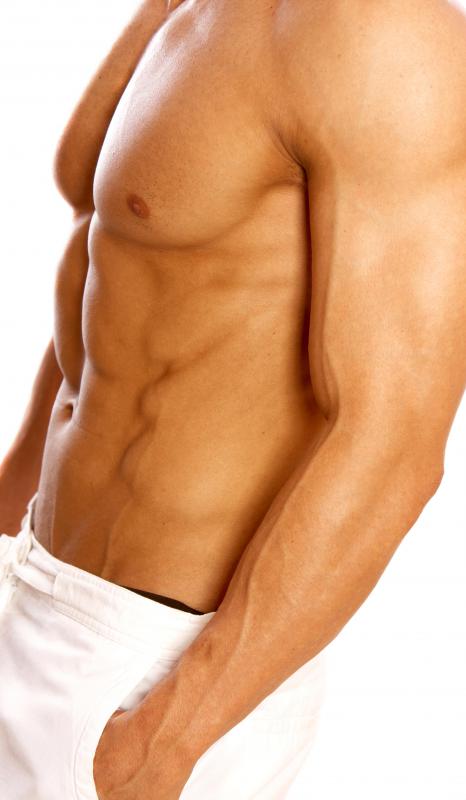At TheHealthBoard, we're committed to delivering accurate, trustworthy information. Our expert-authored content is rigorously fact-checked and sourced from credible authorities. Discover how we uphold the highest standards in providing you with reliable knowledge.
What Is the Median Cubital Vein?
The median cubital vein, also sometimes known as the intermediary cubital vein, is a vein in the human arm. It connects the basilic and cephalic veins in the upper arm so that the three together form a rough “H” shape; it serves as the middle or horizontal connector, and in part this is where it gets the “median” aspect of its name. Together these three veins are important part of the blood flow structure in the arm, and play a role in ensuring that blood flows at the right pressure and speed from the lower arm, including the wrist, the hand, and the fingers, back up to the heart. In most people the median cubital is easy to access and strong enough to support sustained suction, which makes it a common site for venipuncture, or blood draws. This can vary from person to person, though. People who have been subject to many blood draws or who have used intravenous needles regularly sometimes have weakened cubital veins, and certain conditions and genetic problems can make these veins weak, too.
Anatomical Importance

Veins are important for a number of different reasons, but their primary function is to facilitate the flow of blood from various parts of the body back to the heart. The median cubital vein is part of a network of veins that take deoxygenated blood from the hand and forearm to the heart and lungs. After the blood is oxygenated in the lungs, it can be circulated to the rest of the body through arteries. Like all other veins, this one is fitted with a number of valves that close and open in response to blood flow, and prevent blood from going back down the arm.
Location and Basic Structure

The human arm has a number of important veins and arteries, and the family of veins known generally as the “cubitals” are part of this larger structure. They are located in the cubital fossa, which is the area on the upper arm that becomes creased when the elbow is bent. Some people refer to this as the "elbow pit."
The median cubital vein is superficial, which means that it is near the surface. This makes it easy to locate by pressing lightly along the skin on the inside of the elbow. It usually runs lengthwise, crossing from one side of the inner elbow to the next, and then continues down the arm. Although there is some variation from one person to another, the location is fairly consistent. It’s sometimes easiest to find it by first looking for the larger basilic and cephalic veins, then tracing them down the arm until they are crossed by the median cubital.
Role in Blood Draws

Phlebotomists and nurses are frequently trained to look for this vein when they need to draw blood. The cephalic vein can be difficult to use for taking blood because it has a tendency to roll away when the needle makes contact with it. The basilic vein can sometimes be too long and thin to get a good draw, and can be prone to collapse. By contrast, the median cubital vein is fairly short, and when the elbow is extended, the skin and muscles become taught, which helps secure the vein in place. This prevents it from rolling out from under the needle.
Common Problems

People who have their blood drawn a lot, usually as a consequence of a medical condition or treatment regimen, sometimes develop weakened walls in this particular vein. The vein still usually functions just fine in terms of moving blood from place to place, but actually extracting it with a needle can be difficult. People who commonly use intravenous needles in their elbow joint often have this problem, too. In these cases blood usually has to be drawn somewhere else.
AS FEATURED ON:
AS FEATURED ON:
















Discuss this Article
Post your comments